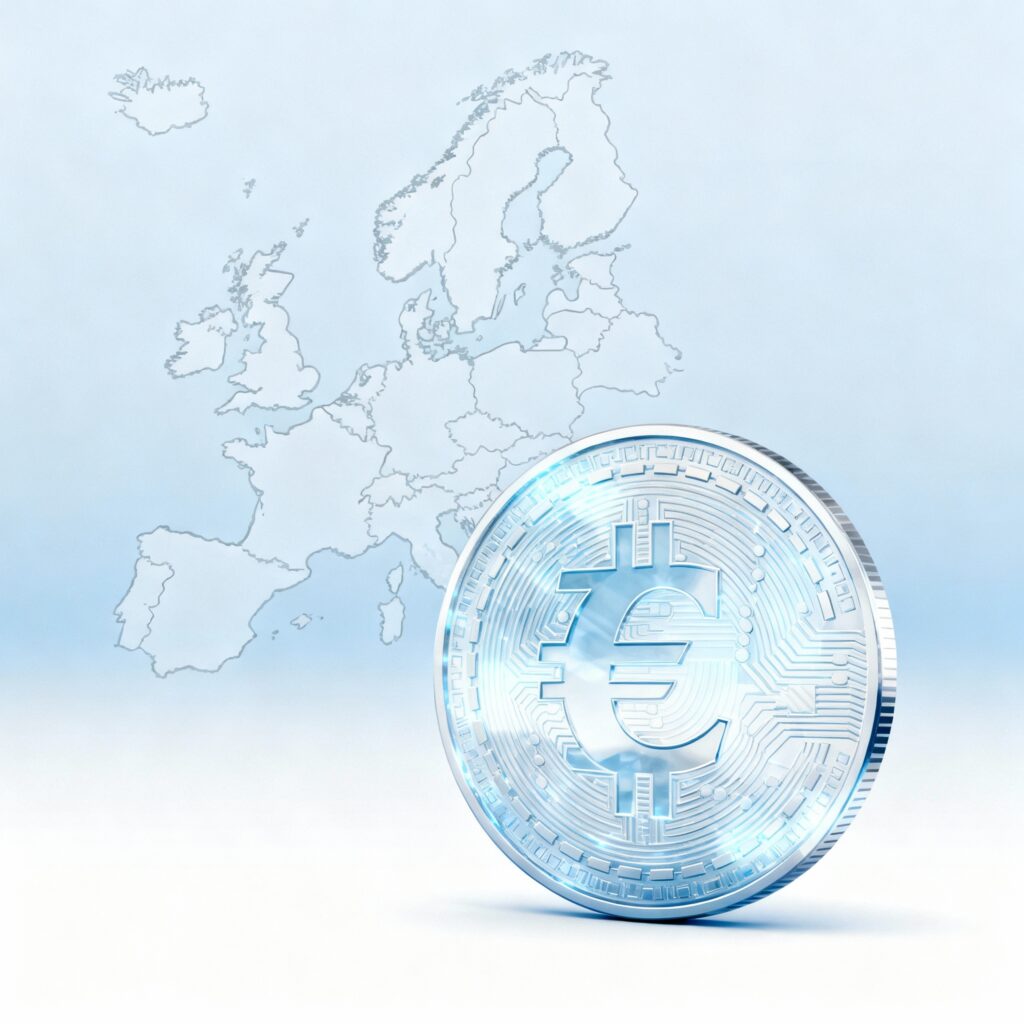The European digital asset space is witnessing a transformative development—nine leading banks have joined forces to launch a EUR-denominated stablecoin designed to provide Europe with strategic autonomy from US-centric stablecoin alternatives. The consortium comprises KBC, ING, SEB, UniCredit, DekaBank, CaixaBank, Banca Sella, Danske Bank, and Raiffeisen Bank International, marking one of the most significant collaborations yet in Europe’s fintech sector.
A New Dutch-Rooted Alliance for Financial Innovation
The stablecoin will be issued by a Dutch-incorporated company, leveraging the Netherlands’ progressive approach to digital assets regulation. This alliance signals a robust commitment from established financial institutions to embrace the future of money—a future where digital euros are not only commonplace, but also governed by stringent, locally set standards.
Targeting MiCA Compliance: The Future-Proof Euro Stablecoin
A defining feature of this project is its early and deliberate focus on full MiCA (Markets in Crypto-Assets) compliance. MiCA, the comprehensive EU framework for crypto-assets, is set to come into force during 2025-2026 and will dramatically reshape how stablecoins are issued, managed, and supervised across the bloc. The banks’ EUR stablecoin will thus be built to meet strict requirements around issuer transparency, reserve management, anti-money laundering measures, and consumer protections right from its inception.

Why “Strategic Autonomy” Matters
Historically, euro liquidity in crypto markets has lagged behind dollar-based offerings, with USDT and USDC dominating global trading pairs and on-chain transactions. By launching a €-denominated stablecoin under European governance, the consortium aims to reduce Europe’s exposure to regulatory volatility in the US and strengthen EU financial sovereignty. This move also supports the broader policy goal of “digital sovereignty,” empowering EU institutions to set their own standards—and providing a viable alternative to legacy dollar rails.
What’s Next? Implications for Payments and DeFi
With a planned 2026 launch, this EUR stablecoin promises to revolutionize euro-denominated payments, cross-border settlements, and potentially unlock new possibilities in decentralized finance (DeFi). For retail and institutional users alike, it could mean faster, cheaper, and more secure euro transfers, supported by the region’s most trusted banking names. In the rapidly evolving world of digital assets, European innovation is gathering momentum like never before.
Conclusion
The formation of this new EUR stablecoin alliance marks an inflection point in European financial history—a bold leap toward embracing blockchain, strengthening compliance, and future-proofing the continent’s currency in the digital age. As 2026 approaches, anticipation will only build for what could become the euro’s most significant digital evolution yet.

Which European Banks Launch EUR Stablecoin To Challenge US Dominance
The European digital asset landscape is entering a new era. In a bold move, nine major banks—KBC, ING, SEB, UniCredit, DekaBank, CaixaBank, Banca Sella, Danske Bank, and Raiffeisen Bank International—have announced the creation of a consortium to launch a euro-denominated stablecoin. This project is anchored by a newly formed Dutch entity, with an ambitious goal: set the standard for compliant, euro-backed digital currency across the continent.
Why A European EUR Stablecoin?
For years, euro liquidity on blockchain rails has lagged behind dollar alternatives. Stablecoins like USDT and USDC, run by US-based entities, dominate global crypto trading and payments. European institutions and policymakers have grown increasingly concerned about relying on non-European issuers for digital assets representing the euro.
A euro stablecoin issued by trusted European banks brings several advantages:
- Strategic autonomy from US monetary systems and regulatory risks
- Fit-for-purpose design compatible with the EU’s regulatory priorities
- Confidence for businesses and consumers transacting in euro digitally
MiCA Compliance: Building For Tomorrow
The initiative’s insistence on MiCA compliance is strategic. Markets in Crypto-Assets (MiCA), the EU’s comprehensive law regulating stablecoins and crypto asset service providers, will apply by 2026. MiCA demands robust transparency, reserve requirements, anti-money laundering protections, and operational resilience.
Unlike existing stablecoins—which often scramble for retroactive compliance—this European EUR stablecoin will be built on MiCA principles from day one. That positions it for wide institutional adoption, secure integrations in banking systems, and potential use in regulated DeFi.
Strategic Autonomy: Europe’s New Digital Frontier
The banks cite “strategic autonomy” as a key goal. By launching and managing a euro stablecoin under EU control, Europe can:
- Reduce risk of dollar and non-EU market shocks
- Establish standards for digital finance innovation
- Strengthen the euro’s role in global crypto, finance, and payments
This consortium’s move reflects a broader EU push for “digital sovereignty”: control over critical payment infrastructure and digital currency issuance.
What’s Next?
With a 2026 launch timetable and support from some of the biggest names in European finance, the EUR stablecoin is poised to reshape euro-based payments and settlements throughout the region. If successful, it could unlock huge new markets for retail, institutional, and decentralized finance.
The partnership signals that European banking is finally making the leap into a blockchain-powered future—on its own terms, with compliance and autonomy front and center.





